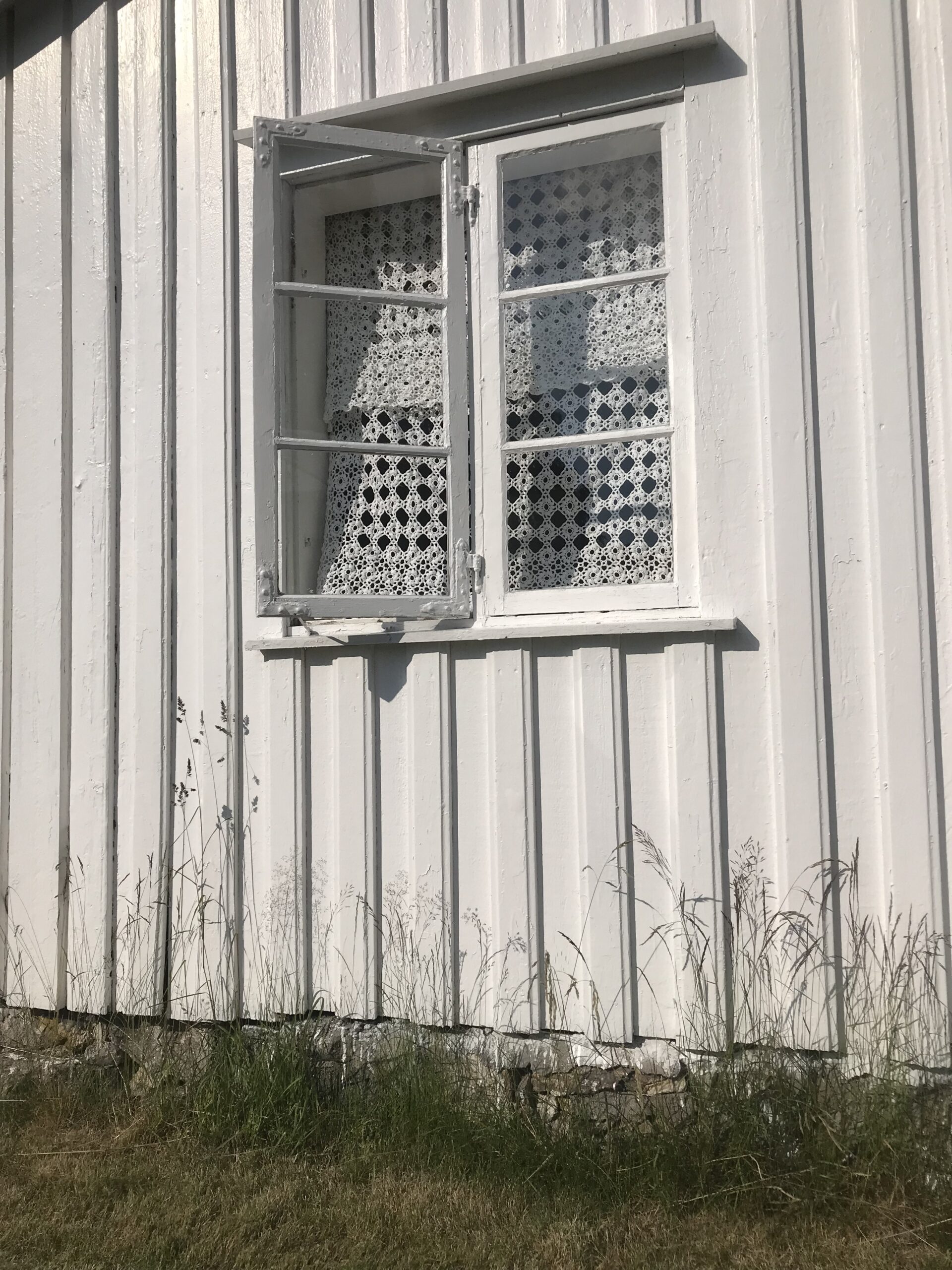
At Sea
Each summer the cadets of Maine Maritime Academy put to sea with a crew of instructors aboard their eponymous training ship, State of Maine. Here, like medical students at a teaching hospital, they set about practicing the skills of their aspirational careers on a live patient—navigating, steering, chipping paint, avoiding collisions, and tending to a diesel plant whose thundering mass fills a room large enough for basketball. Everything is big on a ship like this, which sleeps 350 people and needs 30 feet of ocean just to stay afloat. In tanks below the living spaces there are 3,300 long tons of fuel and 770 tons of potable water. The anchors weigh 5 tons each, set out on chains with links fourteen inches across. An old Navy ship built for speed, not baggage, the State of Maine is slim and pointy at her ends, like a canoe. In a calm sea she moves with almost no feeling of displacement, just a low white-noise rumble of engines and the shoosh of water sliding by.
The ship is a world of disparate atmospheres—stifling machinery compartments, muggy passageways, and bitter air-conditioned rooms cold enough to fog your glasses. The pressure difference between such spaces is enough to hold doors closed or force them open if they aren’t kept latched, and each walking transit is thus underscored by a percussive orchestra of creaks and slams, all powered by unseen suctions. My cabin, far above the main deck, has a single oval window and the feel of a cheap hotel room aboard a very large airplane. New to this billet after a career spent mostly in the more spartan accommodations of sailing ships, I find things here that I’ve not previously equated with life at sea: A brown metal desk and carpeting. Fluorescent lights set into a drop ceiling. A private shower. A battered recliner, a coffee pot, and a mini fridge clogged with frost.
Employed here to teach, I am nonetheless on a learning curve of my own amid these new and labyrinthine environs.
“Go get us one of the spare SCBA packs from the Halon room,” the mate tells me.
I have no idea.
“Of course,” I answer.
Around the corner I find a freshman cadet, a walking Alexa in blue work clothes.
“Go to the Halon room and bring me an SCBA pack,” I tell them.
“Of course, sir.”
Just before dawn in the navigation lab—a room near the bridge that might be the coldest place on the ship not used for food storage—I am preparing for morning star observations. The latter is a task performed in the fleeting minutes of twilight, where with a sextant and some practice one can measure the angle of a star above the horizon before the day dawns and the night sky vanishes. It is a simple thing in theory but requires a steady hand and a sort of mesmeric focus, like archery or perhaps welding. There is a cadet with me, and together we walk up onto the bridge wings, calling out objects by ancient names and lowering them slowly to earth with our instruments: Capella, Aldebaran, Fomalhaut and Schedar. The planet Jupiter, still bright even as rays of sunlight start to ascend from the eastern horizon. Celestial navigation uses bodies in the sky as its lighthouses. Given the precise time and date, it is possible to know just where any one of 75 or so key heavenly bodies might be found. If one can in the same instant measure that object’s location relative to their ship, it becomes possible with some figuring to determine the vessel’s position at sea. Two good observations, taken together, are needed at a minimum for this conclusive step. Three allows you to be sure.
Afterwards, with low light shining in through the chartroom windows, we spread out books and papers to do our calculations. Eventually on the plotting sheet there is a fix— a single dot, labeled carefully with the time and a small symbol to denote its derivation:
* 0547.
This is where we are, or at least were before time was lost to mathematics.
Celestial navigation is an enduring niche of the analogue, a storied skill that mariners of the digital age must still nonetheless master. Its columnar ephemera are set neatly in tables like the one we are using now, an old US Navy publication called H.O. 249. Known to some simply as the air tables, H.O. 249 has been adopted for marine use but was developed originally for airplane navigators, a compact reference for people who needed to shoot stars quickly and in bunches—as one might do while leading an Allied bomber group through broken clouds towards wartime Europe.
I learned this part from a man I once met named Walter Cast, who’d performed this singular job himself early in his life. Walter joined the Air Force in 1943 and was sent to England at the age of seventeen—a Jewish kid from New York with what must have been an above-average aptitude for numbers. Using something called a bubble octant, he would peer up at the stars through a window in the roof of his B-17, one man responsible for the fate of an entire formation of aircraft. The pilot, aged 21, trusted his work implicitly. They never lost their way, and while their plane was eventually shot down by antiaircraft fire, Walter and his mates would all survive the war—ultimately freed from a POW camp and walking across much of France to catch a ship home from Calais.
I have not thought of Walter in years, but here amid the historical trappings of this morning’s exercise he and his wife Ruby emerge suddenly in my recollection: two retired schoolteachers on a vacation trip to Maine, as different as the poles of a battery. He quiet and mild, the unlikely bearer of a riveting story. She a bit younger, tightly coiffed and cheerfully abrasive in the unmistakable way of my own distant aunts from the City.
“I am the trophy wife!” she liked to say. He did not disagree.
In the ship’s mess at breakfast most people are wearing the daily work uniform—blue dungarees, boots, a soft chambray shirt faded from washing. We eat from steel trays stamped with a geometric dimple for each fraction of your meal. The cadets at the serving window are trained to never put more than one food item in any dimple. If you want your eggs and hash browns to touch, you must arrange that yourself once you are seated with your shipmates at one of the long narrow tables.
The trays clatter together. There is limited conversation.
“I haven’t eaten off a tray like this since I was in prison,” I tell someone.
“Yeah, I know, right?” they answer. “I’m glad you got out.”
I think of a phone conversation I had with my grandmother, not long after the pandemic forced her care facility to close itself to visitors.
“I’m sorry I can’t stop in for tea now,” I told her.
“You could stand outside my window and talk through the glass,” she said. “Like when you are visiting someone in jail.”
“When were you in jail, Grandmother?”
“I have friends who have been there,” she said.
After mealtime everyone musters on an upper deck to be briefed on the day’s plan and receive random admonishments: Confined space training for Bravo Company will begin at 0830. The mess is off limits after mealtimes. The fantail has been re-opened to foot traffic but will be closed immediately if people cannot stop bothering the lookout. Captain X, an alum from the class of 1970, passed away in April and has asked that his ashes be interred at sea on this cruise. Any who are interested in assisting with the ceremony should inform their officers.
The wake of the ship boils out behind us, three decks below. The cadets are impassive in their rumpled regalia as this poignant final announcement is made, a fleeting glimpse at the end of an arc they are just beginning to navigate. The word is given to dismiss, and the ranks break up in an ordered milling that makes me think of our beehives at home.
I am due on the foredeck in half an hour with a group that’s learning to use the mooring winches. Caught in an eddy of reminiscence I make coffee and sit down at my keyboard, where through the miracle of satellites it is now possible to surf the internet from a ship at sea. This is a limited miracle in our case—a precious data stream shared by hundreds and as a result frightfully slow, like an AOL dial-up from the heyday of Justin Timberlake. I type and wait. From its uncertain beginning my search ends in a lone result, perched barely across the threshold of the Google age. It is a brief entry from the New York Times, dated 2004:
“Walter,” it begins, “beloved husband of Ruby.”
Elliot Rappaport has sailed as a captain in the US maritime industry since 1992, involved primarily in the training of other mariners aboard a variety of traditional sailing ships. He is presently employed as a faculty member at Maine Maritime Academy, preparing cadets for professional careers at sea. His first book, Reading the Glass: A Captain’s View of Weather, Water, and Life on Ships, was published in 2023.




